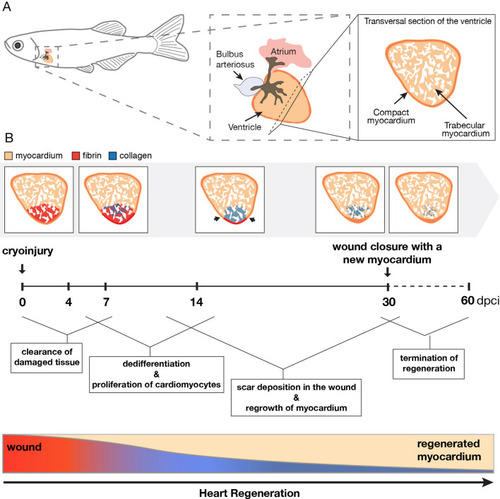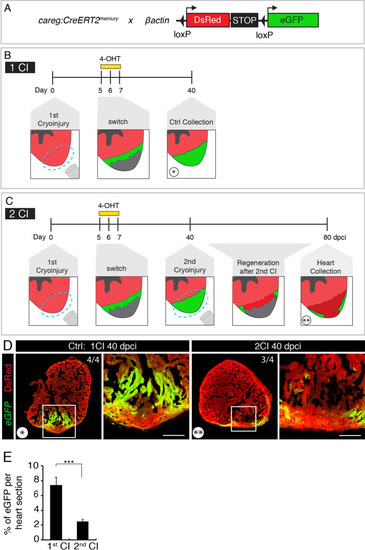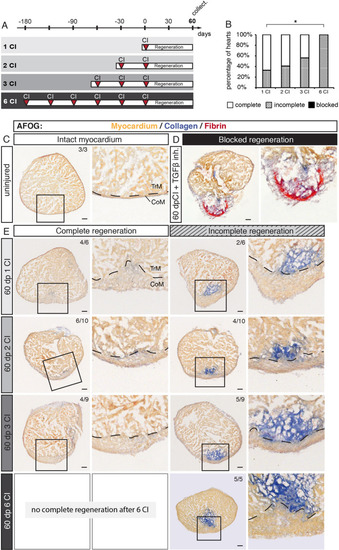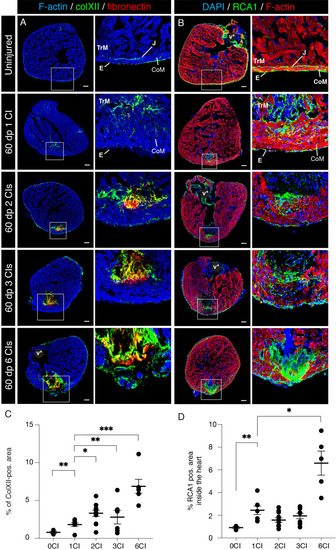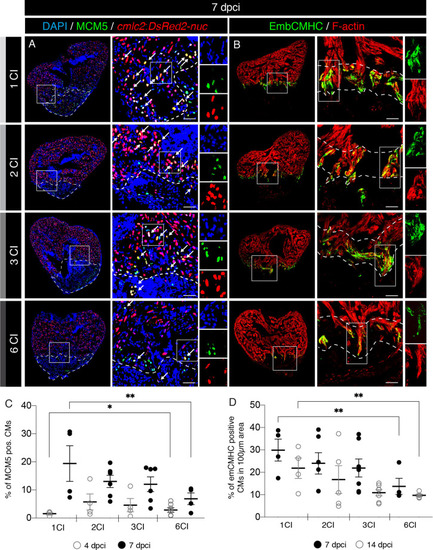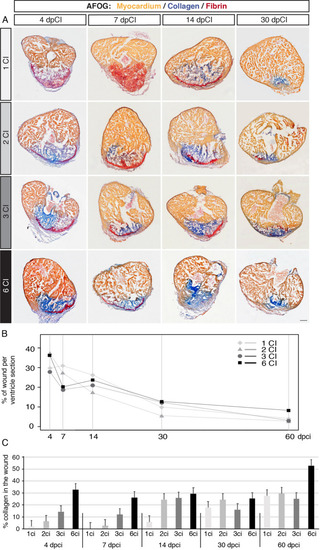- Title
-
Multiple cryoinjuries modulate the efficiency of zebrafish heart regeneration
- Authors
- Bise, T., Sallin, P., Pfefferli, C., Jaźwińska, A.
- Source
- Full text @ Sci. Rep.
|
Schematic summary of the regenerative processes after cryoinjury in the zebrafish heart. ( |
|
Repeated cryoinjuries target the same part of the zebrafish heart. ( |
|
The capacity of complete regeneration is limited after six cryoinjuries. ( |
|
Multiple cryoinjuries enhance deposition of ColXII and connective tissue in the remaining fibrotic tissue. ( |
|
Increased recruitment of Mpx-positive neutrophils at the onset of regeneration after multiple cryoinjuries. ( |
|
A decreased activation of cardiomyocyte proliferation and dedifferentiation after multiple cryoinjuries. ( |
|
Comparison of regenerative dynamics between hearts after multiple cryoinjuries. ( |

